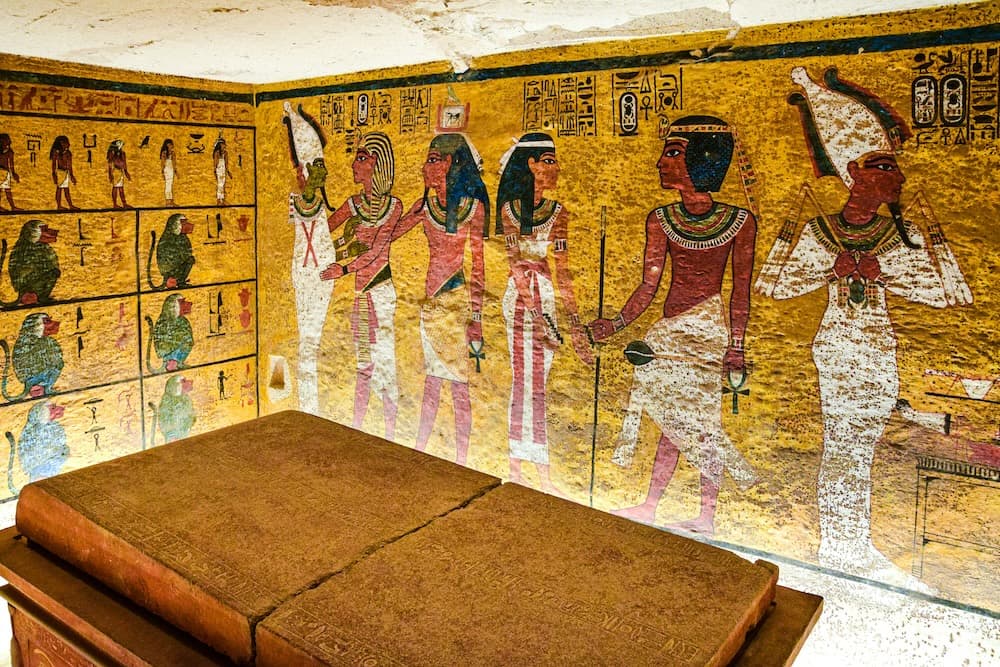The Timeless Wonders of Luxor
Disclosure: Bear in mind that some of the links in this post are affiliate links and if you go through them to make a purchase we will earn a commission at no additional cost to you. We chose these companies / hotels because of their quality and not because of the commission we receive from your purchases.
The temple of Karnak, whose construction took 1,500 years, is one of the greatest architectural achievements ever made. The fact that St. Peter's Basilica in Rome and St. Paul's Cathedral in London could easily fit on the 40-hectare (100-acre) site—and there would still be room for eight other buildings of similar size—becomes clear when you stand in the middle of the impressive large columns of the Hypostyle Hall, which covers 5,600 m² (60,000 ft²) and where 134 columns, each 25 meters (82 feet) high and 10 meters (33 feet) in diameter, rise up.
Karnak is the most important religious sanctuary of antiquity, and the temple is connected by a 3-kilometer-long promenade (once lined with sphinxes) to the sanctuary in the south, the temple of Luxor.
The city of Luxor stands on the site of ancient Thebes, the thriving capital of Egypt’s New Kingdom, which once had more than a million inhabitants. On the eastern bank of the Nile, where the sun rises, stand the most important examples of ancient Egyptian architecture. However, Luxor's appeal continues on the western bank. Here, the inhabitants of Thebes built their City of the Dead, the largest and most famous necropolis of ancient Egypt. Of the many royal tombs excavated in the Valley of the Kings, the tomb of Tutankhamun was found to be intact.
Visitors can only imagine what must have transpired in the immense tombs of more powerful pharaohs like Ramses II. The seven-chamber tomb of Ramses' wife, Nefertari—reopened in 1995—in the nearby Valley of the Queens, is regarded by art historians as the most beautiful one currently open to the public. It is a vivid and intricately painted love letter from the pharaoh to his favorite of his 40 wives.
Visiting the sights of Luxor can take the whole day: setting the alarm for dawn’s first light can help you find some peace among the ruins before the hordes of tourists and the heat arrive. After a long, dusty day, take refuge in the Old Winter Palace. Skip the new wing and nostalgically request a room in the original wing (built in 1886). The high ceilings, enormous wardrobes, oriental carpets, and elegant crystal chandeliers date back to the first period of British imperialism. The garden of the Old Winter Palace, the most beautiful and largest in Luxor, is tended by a dozen gardeners, ensuring it remains the coolest spot in the city to enjoy a cup of tea.
Where to stay
The Sofitel Winter Palace Luxor is an ideal starting point for exploring Luxor due to its great location and rich history. Situated right on the banks of the Nile, this hotel offers easy access to many of Luxor’s iconic landmarks. Luxor Temple is just a short walk away. The proximity to the Nile also makes it a convenient base for going on river cruises.
The hotel’s historical significance enhances the experience of visiting Luxor, as it has hosted notable figures like Howard Carter. He announced the discovery of Tutankhamun’s tomb at the hotel. Staying here places you in the heart of the city’s past while offering modern luxury.
Best time to visit
The best time to visit Luxor is during the cooler months, from October to April, when the temperatures are more comfortable for sightseeing. During this period, daytime temperatures range from 20°C to 30°C (68°F to 86°F). Perfect for exploring the outdoor attractions like the Valley of the Kings, Karnak Temple, and Luxor Temple without the oppressive heat of the summer months. Winter (December to February) tends to be the most pleasant, with mild weather. Especially during in the evenings.
Avoid visiting in the summer months (May to September), when temperatures can soar above 40°C (104°F)